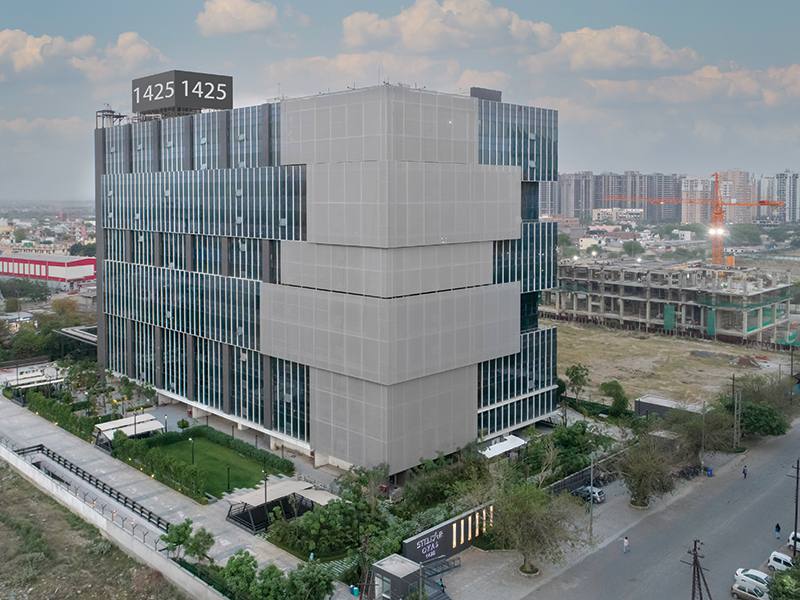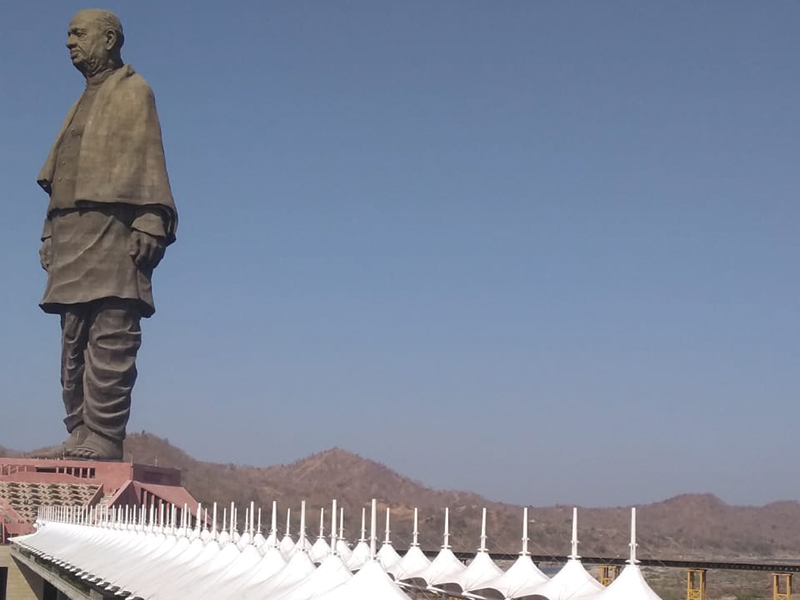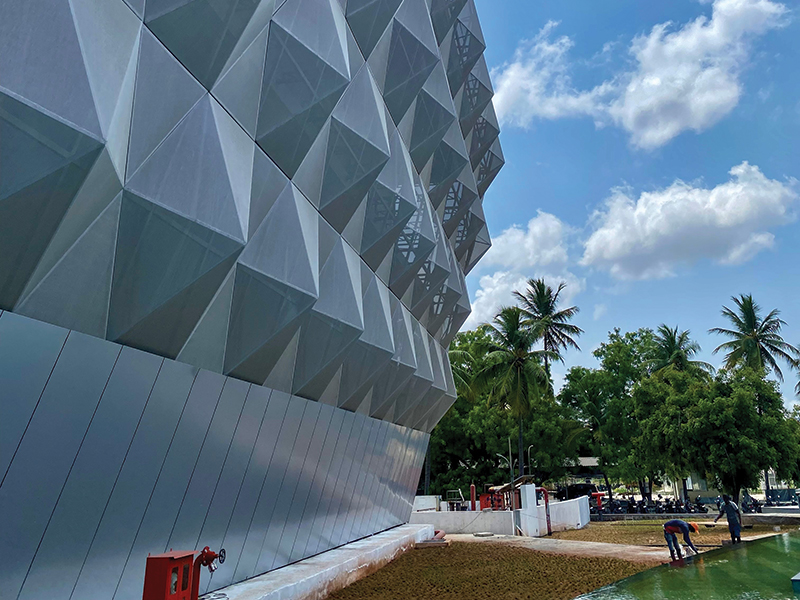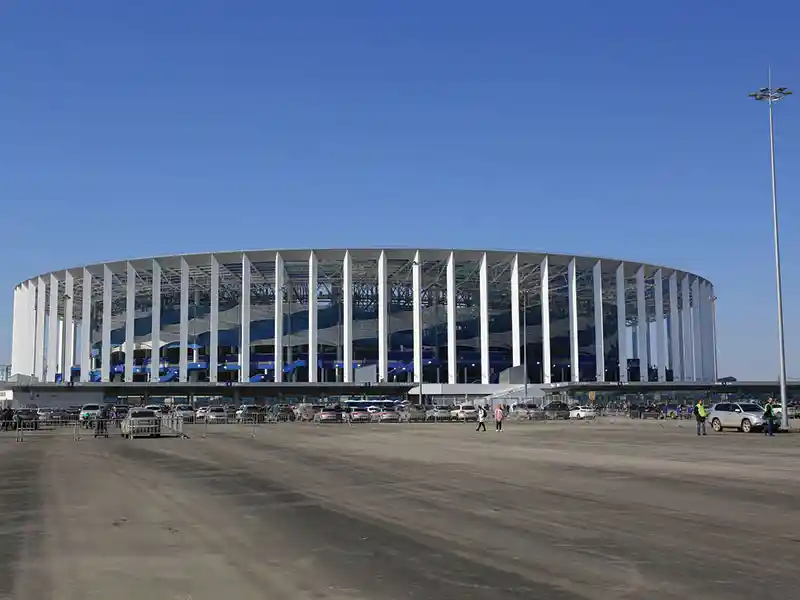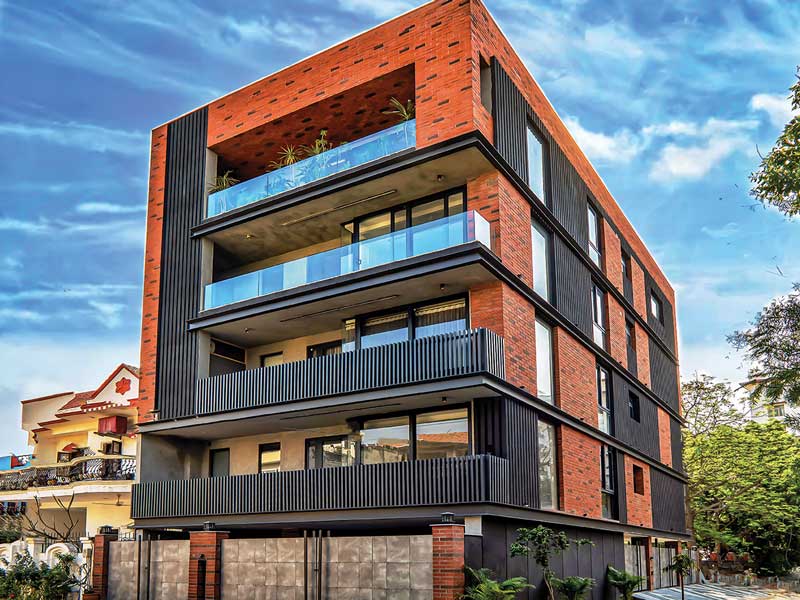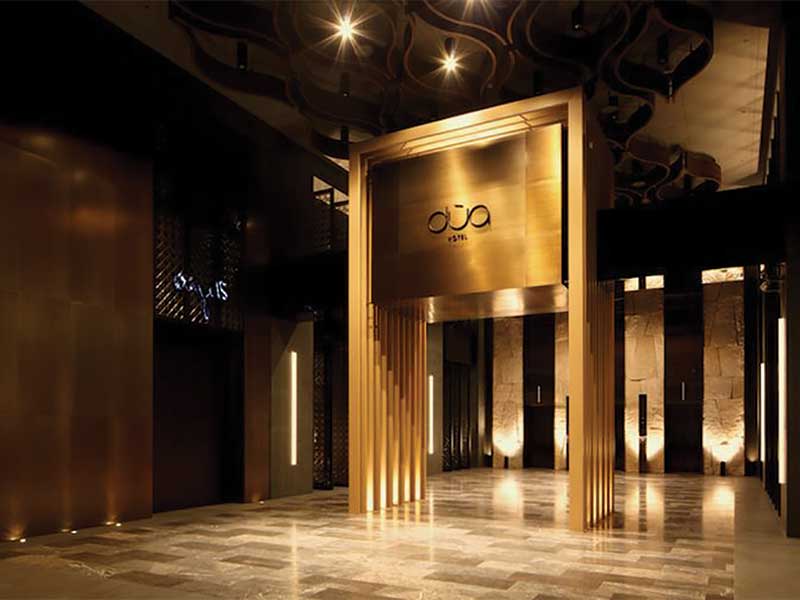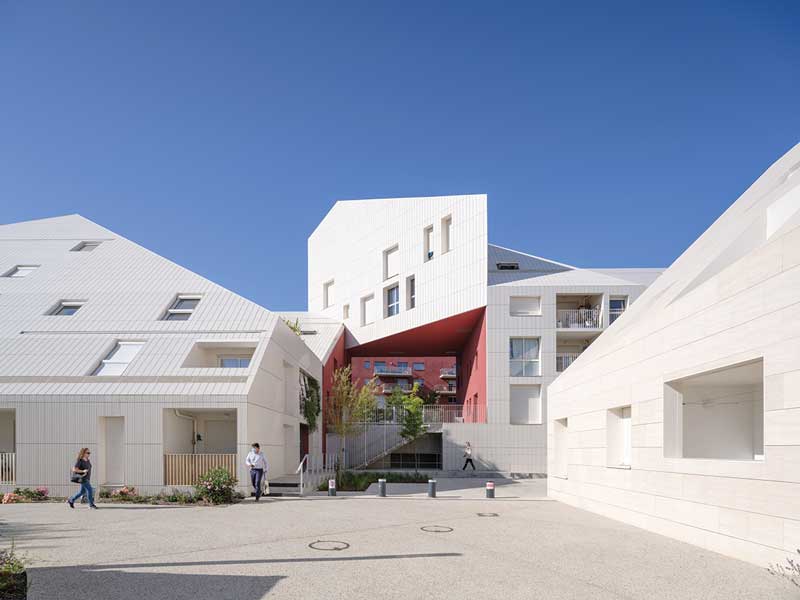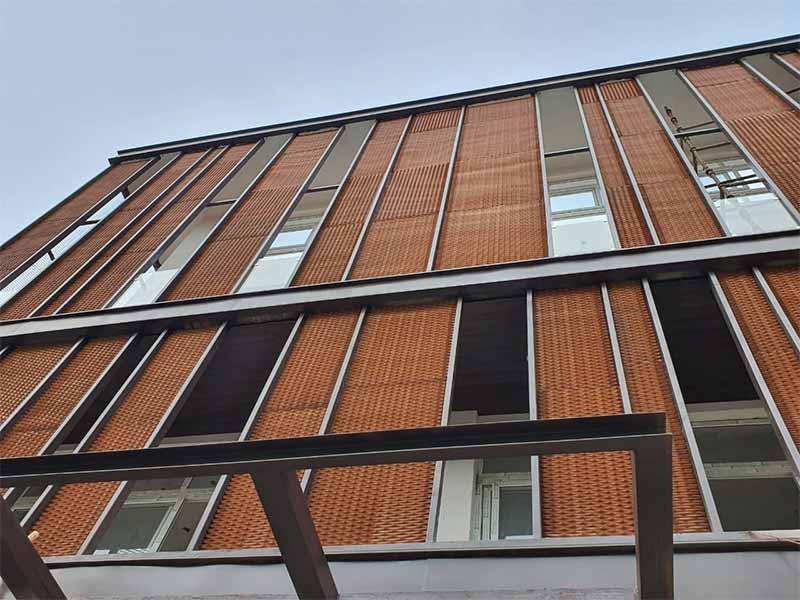The potential applications for tensile roofing continues to expand as the technology and materials used in the industry continue to develop and modernize.
Punit Jhaveri, Director- Strategic Growth
Tensile structures, roofing, and facades are visible in sport stadiums, shopping malls, office buildings, terraces, and airports - and the concept is set to grow.
Tensile is finding new application areas, especially roofing, which has become increasingly popular due to its versatility, durability, and aesthetic appeal. In recent years, new application areas for tensile roofing have emerged, and can be seen in the following areas:
Tensile roofing is being used in sports facilities such as stadiums, arenas, and gymnasiums to provide protection from the elements while maintaining an open-air feel. Tensile roofs can also be designed to allow natural light to filter through, creating a pleasant environment for sports events. For instance, at Hockey Stadium project in Jalandhar Cantt, we used a fabric Sioen Type 2 1050 GSM.
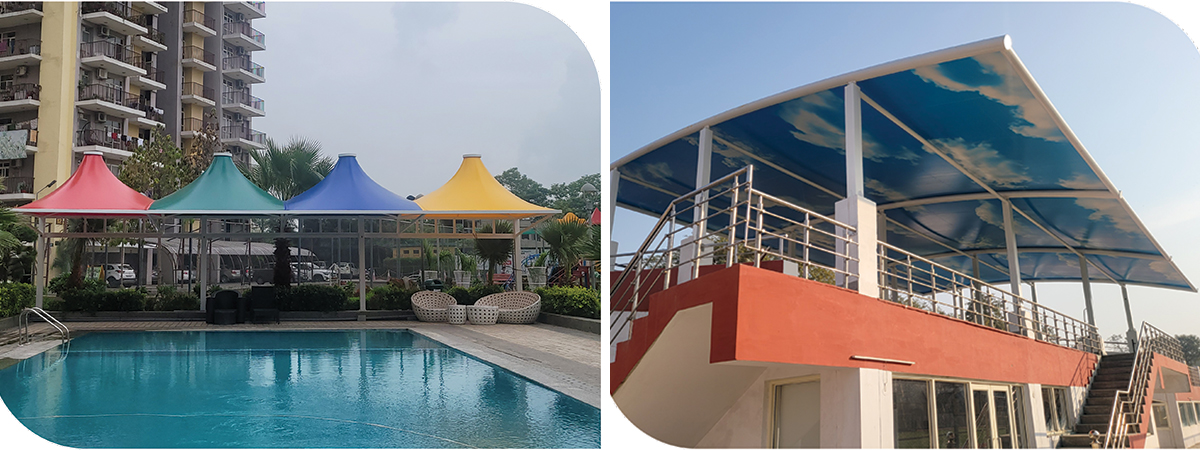
When used in shopping malls, hotels, and airports, tensile roofing creates a unique and visually appealing structure. Tensile roofs can be customized to suit the specific needs of the building, to provide a modern and functional solution. For instance, at the PVR Cinema in Patiala, we used Sioen Type 2 1050 GSM fabric.
Tensile roofing is being used in transportation hubs such as railway stations, bus terminals, and airports to provide protection against the weather conditions for travelers. Tensile roofs are a good option for these area as they can be designed to cover large spans, providing ample space for travelers and their luggage. For example, at the Coimbatore GH bus stand, we used Sioen Type 3 1150 GSM
Tensile roofing is also being used in private homes and apartments to create outdoor living spaces. Tensile roofs can be designed to cover patios, decks, and other open areas, to create a comfortable and functional outdoor living space. For example, at the Trishla City project in Zirakpur, we used Sioen Type 2 1050 GSM fabric.
Tensile roofing is being used in agriculture to create shade structures for crops and livestock. Tensile roofs can also be used to cover agricultural equipment and machinery, providing protection from the elements. In the Prime Gate project in Zirakpur, we used Sioen Type 2 1050 GSM fabric.
Tensile roofing can play a vital role in healthcare facilities by creating covered walkways, entrance canopies, and outdoor healing spaces. These structures provide protection for patients, visitors, and healthcare professionals, ensuring safe and comfortable circulation throughout the hospital premises. Tensile roofing also adds aesthetic value and contributes to a healing and calming environment. At the DMC Hospital in Ludhiana, we used Sioen Type 2 1050 GSM fabric.
Lucky-Tech + Sioen tensile roofing products are known for their high-quality, exceptional durability, and energy-efficient properties. Our expertise in design, engineering, and construction, allows us to create customized solutions for clients to meet their specific requirements in the fastest timelines. In fact, tensile offers architects and designers a great deal of creative freedom, allowing them to create unique shapes, forms, and designs that are not possible with traditional roofing systems. Attractive and functional roofs can be created for both large and small projects.
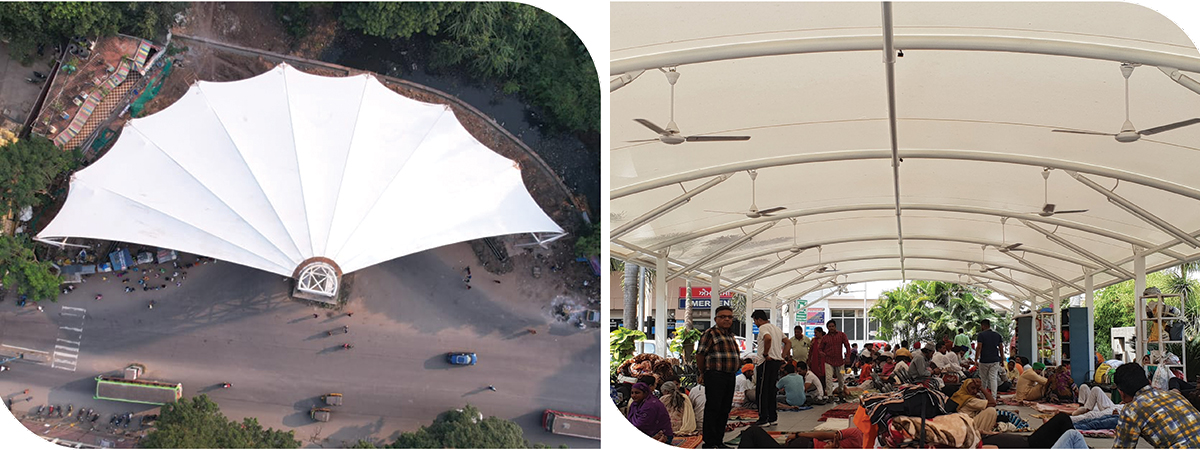
The lifespan of tensile roofing depends on a number of factors, including the type of fabric used, the environmental conditions, and the maintenance and care given to the roof. Generally, a well-maintained tensile roof can last up to 20 years or more. The maintenance requirements of tensile roofing are relatively low compared to other types of roofing. However, regular inspections and maintenance are important to ensure the longevity of the roof. Here are some key maintenance requirements for tensile roofing:
- Tensile roofing should be cleaned regularly to prevent build-up of dirt, debris, and other contaminants that can damage the fabric. Depending on the location and environmental conditions, cleaning may be required once or twice a year.
- Regular inspections should be conducted to check for any signs of damage, such as tears, punctures, or loose connections. Inspections should be conducted after severe weather events such as hailstorms or high winds.
- Any damage to the tensile roof should be repaired as soon as possible to prevent further damage to the fabric. Repairs should be conducted by a qualified professional who has experience with tensile roofing.
Tensile fabric manufacturing is a complex and specialized process that requires advanced machinery, skilled technicians, and strict quality control measures to ensure production of high-quality and durable fabrics. We have invested in a 200,000 sqft European standard manufacturing facility located in Bhiwandi with a production capacity of more than 2,500 sqm a day. Our state-of-the-art equipment and technology ensures that our products are of the highest quality and meet industry standards. We have partnered with Sioen Industries, Belgium, for fabric; Zund, Switzerland for Cutting Machines, Forsstorm, Sweden, for 20KW High Frequency Welding, Technet, for designing, and HP Latex for printing.



